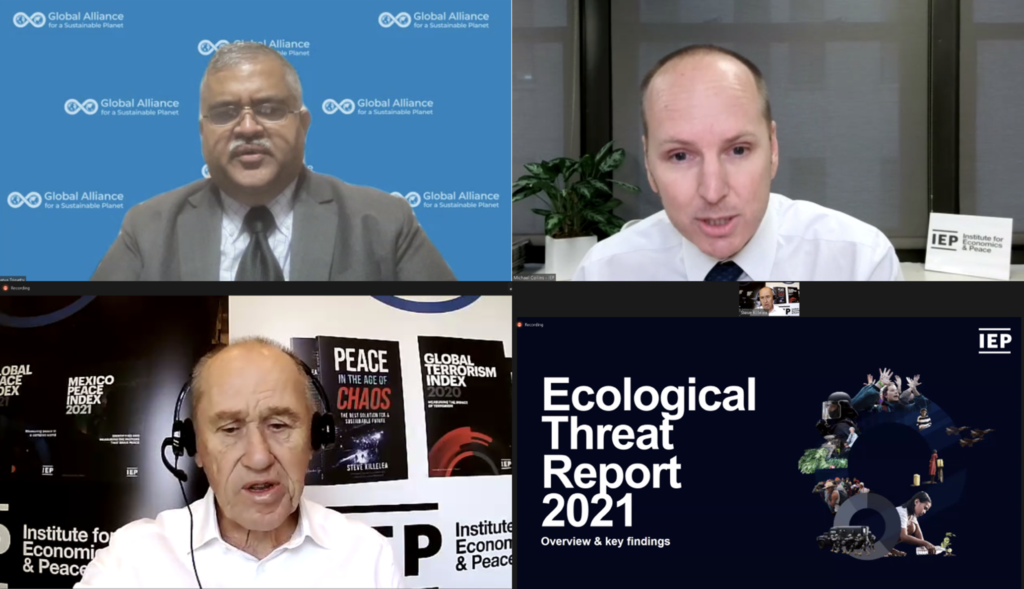The impacts of climate change manifest quickly in all corners of the globe. The World Economic Forum (WEF) 2022 Global Risks Report listed environmental risks as the most critical long-term threats to the world citing “climate action failure”, “extreme weather”, and “biodiversity loss” as the top three most severe risks. The Intergovernmental Panel on Climate Change (IPCC) Sixth Assessment Report on “Impacts, Adaptation, and Vulnerability”, published on 28 February 2022, elaborated on these threats. According to the report, 3.5 billion people are already highly vulnerable to climate impacts, and half the world’s population suffers severe water shortages at some point each year. “This report is a dire warning about the consequences of inaction,” said Hoesung Lee, Chair of the IPCC. “It shows that climate change is a grave and mounting threat to our wellbeing and a healthy planet. Our actions today will shape how people adapt and nature responds to increasing climate risks.” The subsequent IPCC Report titled “Climate Change 2022: Mitigation of Climate Change”, published on 4 April 2022 warned it’s “now or never” to avoid a climate disaster.

“The number and percentage of food-insecure people globally has risen every year since 2014. By 2050, the number of food insecure people is expected to increase by 43% to 3.4 billion people” – Mr. Steve Killelea, Founder of the Institute for Economics and Peace (IEP)
Last year’s COP26 brought pledges from government leaders and CEOs from around the world to accelerate the decarbonization of the economy. The Glasgow Financial Alliance for Net Zero (GFANZ), a global coalition of leading financial institutions, committed a whopping $130 trillion to combating climate change and greening investments.
Despite these well-intentioned gestures, the WEF Global Risks Report 2022 cautioned of a “higher cost of carbon, reduced resilience, failure to keep up with technological innovation and limited leverage in trade agreements.” Countries failing to transition may be subject to “economic volatility, deeper unemployment and increased societal and geopolitical tensions.” It begs the question of how quickly governments should act to adopt new environmental policies; acting too hastily could have harmful unintended consequences for nature and may exacerbate inequalities in and between countries.
Last year, the Institute for Economics and Peace (IEP), an international think-tank, published the Ecological Threat Report (ETR) raising alarms to such growing inequalities. The report compiles data from 2,500 sub-national administrative units in 178 independent countries and territories and highlights a vicious cycle whereby degrading resources lead to more conflicts, and the ensuing conflicts are further increasing resource degradation. According to the ETR, for over 30 years, the world has witnessed approximately 10,300 natural disasters and 42 per cent of them have come from flooding. These ecological threats are correlated with high levels of violence. In 2021, 47 countries with 3.3 billion people were exposed to extreme ecological threats. And, by 2050, almost half of the world’s population (4.7 billion people) is expected to live in the 40 least peaceful countries in the world. Adding to the challenges is growing global food insecurity. Since 2014, there is a 44 percent increase in global food insecurity which affects around 30 percent of the world’s population. This has been exacerbated by the COVID-19 pandemic and the recent conflict in the Ukraine. Both Russia and Ukraine are massive exporters of major food crops, but the current conflict has strained food supplies, causing prices of food, fertilizer, and energy to soar. Rising food prices mean rising food insecurity, since rising food prices reduce the real incomes of households, pushing more people into the food poverty trap. This effect is most acutely felt in developing countries.

According to the United Nations High Commissioner for Refugees (UNHCR, 2022), approximately 5.4 million people are fleeing the conflict in Ukraine. This figure tops the 82.4 million people who were displaced in the world last year, mainly in African countries (UNHCR, 2021). The threat details the cyclical effect of conflict and ecological degradation.
Land degradation is rampant in Africa, accounting for 46% of the total land area (Agnes Africa, 2020). In Niger, over 75 percent of the land and soil is highly degraded contributing to food insecurity for close to 3 million people. Somalia is second with over 5.5 million people food insecure. With conflicts costing the global economy $600 billion in 2020, the ETR stressed that COP26 negotiations needed to approve resilience funding aimed at ecological hotspots and threatened food systems before drivers of conflict intensity.
“Key drivers of future conflict are rising malnutrition, food insecurity and population growth in the most stressed countries” – Mr. Steve Killelea, Founder of the Institute for Economics and Peace (IEP)
Food systems – despite the growing recognition of their important role in addressing climate change and food security – were not prominently featured at COP26. However, the importance of “agroecology” and need to protect and restore “nature and ecosystems” was acknowledged in the text and will be addressed again at COP27.
As the world’s population steadily increases, against the backdrop of a less secure world, there are more ecological threats to our environment. The Global Land Outlook 2 Report from the United Nations Convention to Combat Desertification (UNCCD), published on 27 April 2022, points out that 40% of Earth’s land has been compromised by human activities. Moreover, “USD 44 trillion of economic output – more than half of global GDP – is moderately or highly reliant on natural capital. Yet governments, markets, and societies rarely account for the true value of all nature’s services that underpin human and environmental health.”
So do supply-side promises and pledges mean much in a world of weakened multilateralism and a dearth of meaningful shovel-ready projects? This call for action is exactly what the IEP encourages to secure a sustainable future for all.
In the ETR report, the IEP proposes several policy recommendations, including an integrated agency in high-risk areas to deal with agricultural and business development, health, finance, food, refugee relief, and water. This would allow for a more efficient allocation of resources and streamlined decision making. These policy recommendations recognise the importance of an intersectional approach, which would allow for quicker responses to ecological risks and crises. To a large extent, displacement, destruction, and disasters are no longer an ecological threat but an ecological reality. The IEP, WEF and UN reports highlight the most serious risks we face that require our collective action in addressing them- for nature, people and planet.



